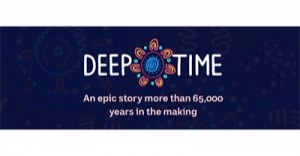

Observations are more than compliance—they’re acts of care, advocacy, and professional insight. When educators write observations with emotional intelligence and sector-savvy language, they make children’s learning visible, amplify their voices, and strengthen the case for quality early childhood practice. This guide supports educators in writing observations that are purposeful, symbolic, and aligned with the EYLF.
Q: A strengths-based approach focuses on what children can do, rather than what they lack. It celebrates each child’s capabilities, interests, and efforts and uses these as the foundation for learning and development.
A: While photos can enrich documentation by capturing moments visually, many observations are just as powerful when conveyed through thoughtful narrative, voice transcripts, symbolic sketches, or emotionally intelligent reflection.
Observation starter prompts invite educators to notice deeply, listen generously, and document with emotional intelligence. This article offers themed prompts across routines and play contexts, enabling educators to write about children's experiences without assumptions or judgment.
Creating open-ended observations in early childhood settings is all about capturing the richness of a child’s experience without judgment, assumptions, or leading interpretations. These observations invite reflection, celebrate authentic voice, and support responsive planning. The following article is a guide to help you craft them effectively.
A: There’s no fixed number of observations required from educators across all early childhood services in Australia—it depends on your service’s philosophy, policies, and the needs of the children.
Writing a group observation in early childhood education is both an art and a strategic tool—it captures collective learning while honoring individual voices. Here's a guide to help you craft meaningful, pedagogically sound group observations that align with the planning cycle and resonate with families and educators alike.
In early childhood education, observation and planning cycles are meant to illuminate learning—not drown educators in endless paperwork. Yet for many services, these cycles have become overwhelming, rigid, and detached from everyday practice. The solution isn’t to lower standards but to design systems that reflect real moments, empower educator voice, and prioritize children's growth without burning out the people guiding it.
A work sample observation in early childhood education is a method used by educators to document and assess a child's learning and development through collected samples of their work. These samples can include drawings, paintings, writing, collages, and photographs of projects.
 The following lists cultural and special events that are taking place in December 2025. This should help you to plan and organise upcoming events and… Read More
The following lists cultural and special events that are taking place in December 2025. This should help you to plan and organise upcoming events and… Read More
 Australia is home to the world’s oldest continuous cultures, with First Nations Peoples holding stories, knowledge, and connections to Country that stretch back more than… Read More
Australia is home to the world’s oldest continuous cultures, with First Nations Peoples holding stories, knowledge, and connections to Country that stretch back more than… Read More
 An early learning centre in Mandurah, Western Australia, has been left devastated after an alleged arson attack caused extensive damage estimated at $500,000.
Read More
An early learning centre in Mandurah, Western Australia, has been left devastated after an alleged arson attack caused extensive damage estimated at $500,000.
Read More
 Explore the responsibilities, legal obligations, and best practices of the nominated supervisor ECEC with this three-part webinar series presented by Victoria McDowell and Meray Parsons… Read More
Explore the responsibilities, legal obligations, and best practices of the nominated supervisor ECEC with this three-part webinar series presented by Victoria McDowell and Meray Parsons… Read More
 Early childhood teachers across Victoria are sounding the alarm over new childcare reforms, warning that the changes are piling administrative burdens onto staff and eroding… Read More
Early childhood teachers across Victoria are sounding the alarm over new childcare reforms, warning that the changes are piling administrative burdens onto staff and eroding… Read More
© 2009-2025 Aussie Childcare Network Pty Ltd. All Rights Reserved.

